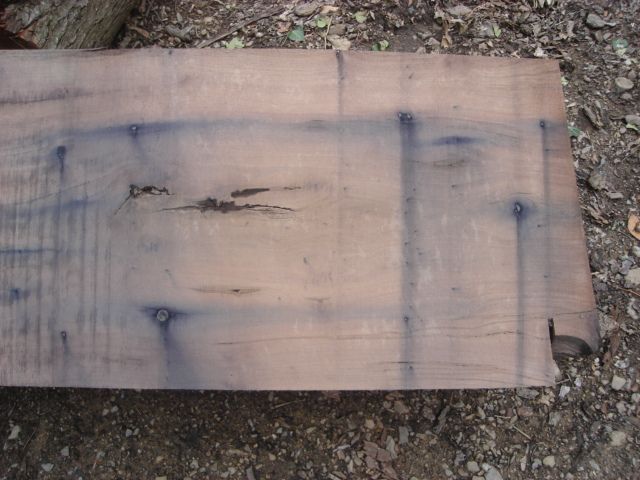Question
I had some oak and pine logs sawn into one inch boards and some of the boards vary from as much as 1/16 to 1/8 of an inch from end to end. I was told that every mill makes lumber the same way and if I wanted one inch boards I would need to put it through a planer. If that is what everyone else does, oh well, but what do I do with the 15/16 inch boards?
Forum Responses
(Sawing and Drying Forum)
From contributor D:
You should have had them cut to 1-1/8 and then planed them down to 1 inch.
Because of variation, the average is larger than the minimum (often 1/16" or so) and the thickest piece is even larger. Many accurate mills will have an average of 1-1/16" or maybe even 1-3/32" average. Less accurate mills will target 1-1/8". The variation along the length does exist, but if it exceeds the standard (for example, 1/4" difference between thickest and thinnest in 4/4 in the grading area), then it is measured and graded normally, but the word "miscut" is added to the description.
Once the lumber is dried, 4/4 can be 1/16" thinner than above for the minimum.
Of course, if the customer wants thicker lumber, they can specify it. However, each 1/32" thicker is 2 to 3% yield loss.
For softwoods, the requirement is that 4/4 lumber must be 0.75" thick at the time of grading. You could grade it green, air-dried, or kiln-dried. For each case, you would have a different target thickness at the sawmill. However, with about 4% shrinkage in drying maximum and with a planer allowance of 0.09" or less, the green minimum sawn size for 4/4 lumber that will be kiln dried and then planed, is somewhere close to 15/16".
So, without specific instructions, it sounds like the pine is fine and perhaps the oak is a bit thin... at least a few pieces.
In the many mills I measured in Virginia, the best was a band mill, but there were several circle mills that were very close, as well. There were some band mills that were poor, as well as some circle mills. It is incorrect to assume that circle mills are always poor or that band mills are always good.
Many states had a utilization specialist in their forestry department that conducted thickness studies for free... Maybe your state has this service.
Note that the customer is almost always concerned about the thinnest piece of lumber, not the average or thicker pieces. In my studies in VA, it was surprising to see the variability from mill to mill on the actual size of the invest piece.
Note that statistics are used to determine the thinnest piece, so the thinnest piece can be thinner than any of the 30 that we measured. Also, we are able to suggest an adjustment of the target average lumber size to assure happy customers.
I have noticed some variations in larger cuts and thought it could be from saw wobble and running dull teeth. I believe Gene has hit the nail on the head. Possible saw wobble and/or stresses within the wood. I have seen boards (now firewood) lift off the log and peel to the side before the mill was 2/3 down the log. It makes me wonder with the variances in MC within the log at various times (just fell or been in the yard for a while) that with the right conditions (internally dryer and compressed or stressed) it might be possible for the wood to expand almost instantly, up to 1/32", after getting milled, depending on the size and thickness of material. Gene, could releasing a dryer compressed wood cause a slight expansion?
